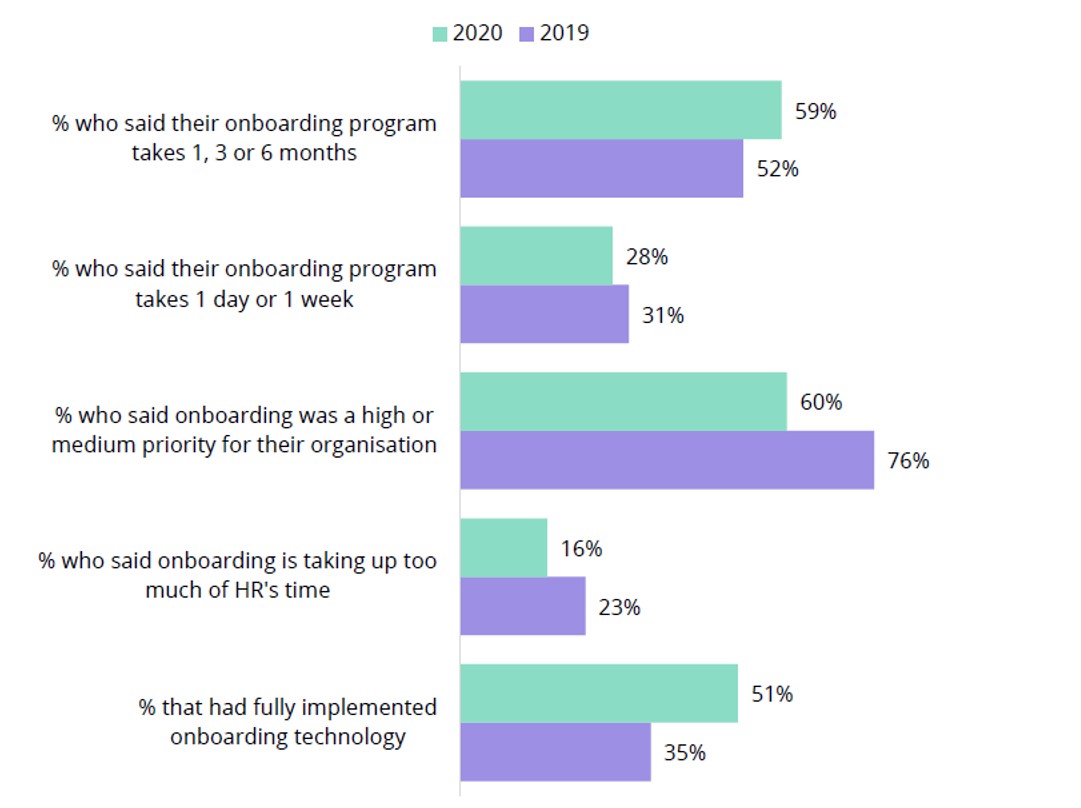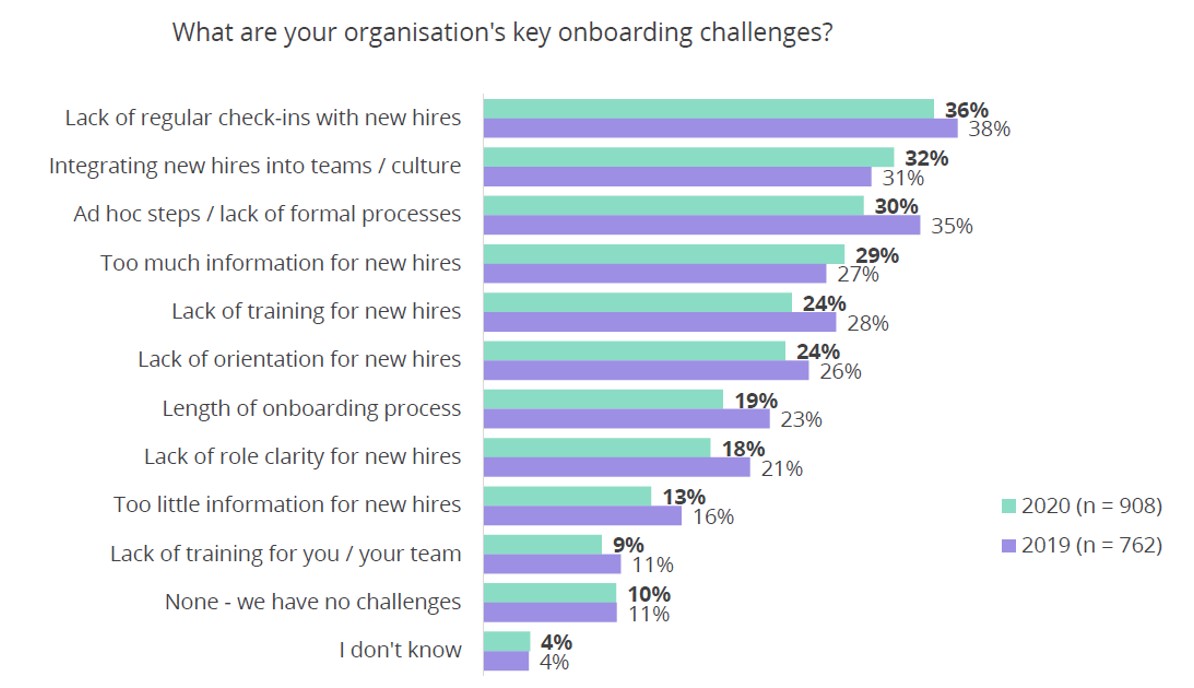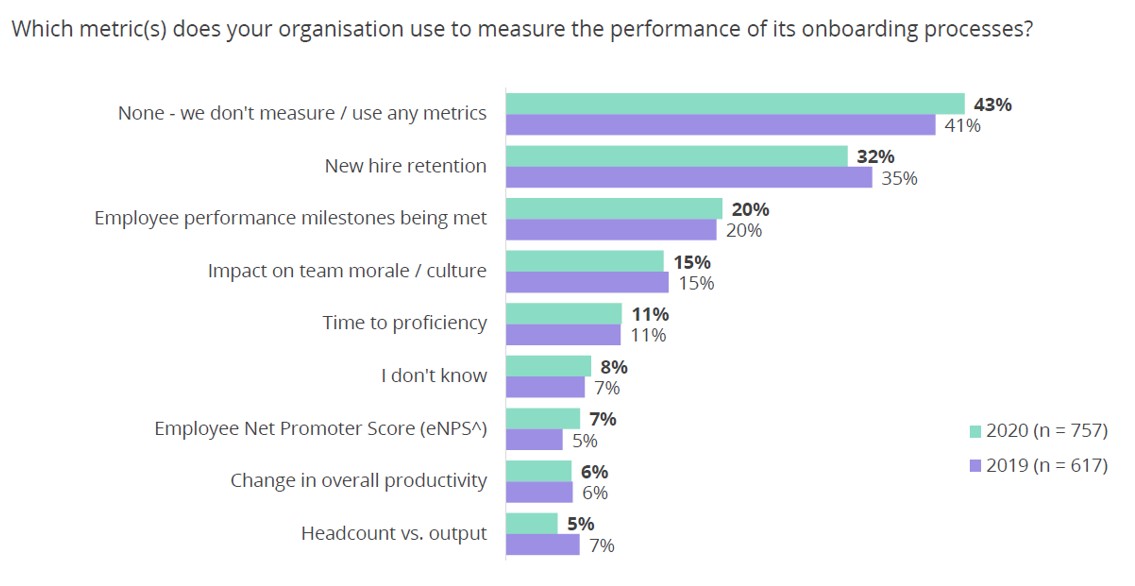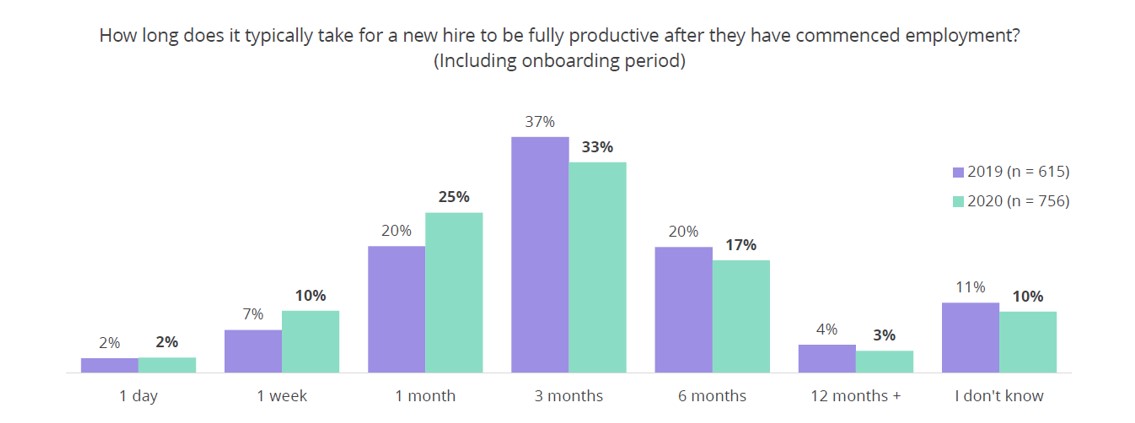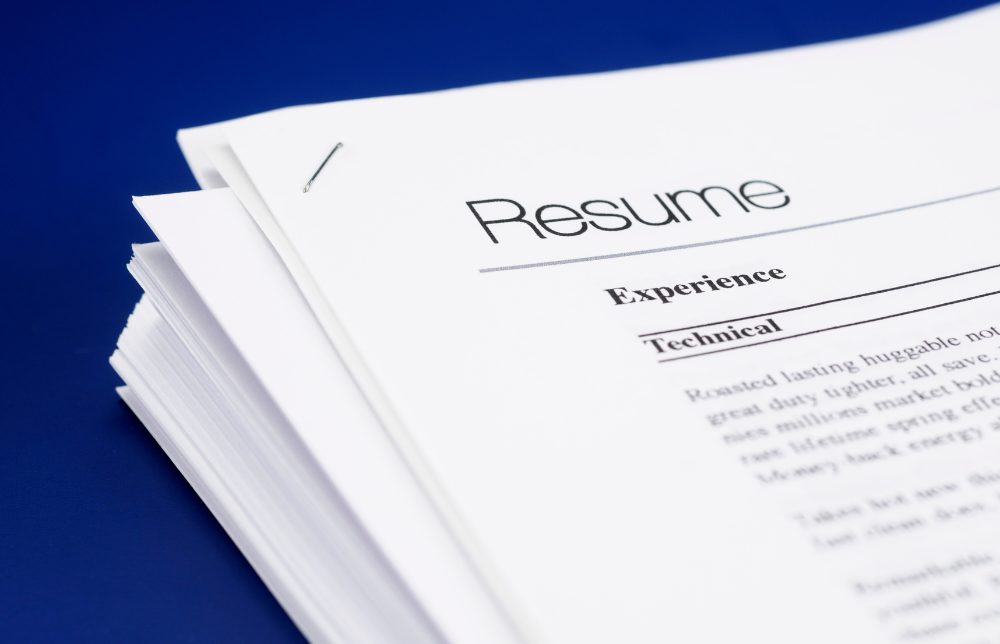ELMO 2021 HR Report – Onboarding
Onboarding is a critical organisational activity. Onboarding programs are typically spearheaded by HR, who take ownership of administrative tasks, induction programs, and facilitate check-ins and coaching between new starters and ...

Onboarding is a critical organisational activity. Onboarding programs are typically spearheaded by HR, who take ownership of administrative tasks, induction programs, and facilitate check-ins and coaching between new starters and managers. While onboarding processes can vary between organisations, the goal is the same: to ensure new hires are job-ready, supported and reach maximum productivity as quickly as possible. With so much importance placed on the value of onboarding, employers need to know how they can best optimise their processes.
So, where do organisations in Australia and New Zealand stand when it comes to onboarding? ELMO’s 2020 HR Industry Benchmark Report, in partnership with the Australian HR Institute (AHRI), surveyed 1800 HR professionals and uncovered some interesting insights on all key business functions – including onboarding.
Onboarding as a priority
Firstly, there was a decrease in the percentage of respondents saying that onboarding took up too much of HR’s time relative to the value it delivered. In 2019 this figure was 23%, which dropped seven percentage points in 2020 to 16%. The reason for this is two-fold. First, onboarding as a priority for HR declined during COVID-19, which is perhaps unsurprising considering many organisations halted or reduced recruitment. Coupled with this is the increased use of technology to automate onboarding tasks. In 2019, one in three (35%) respondents said they had fully implemented onboarding technology, and in 2020 that rose to one in two (51%). This suggests there is a common understanding around the importance of making onboarding efforts as streamlined as possible without sacrificing any aspect of the new hire experience. See the full results in the graph below.
Onboarding challenges
When asked to identify the most common onboarding challenges their organisation faced, the answers from respondents were similar to those of 2019. The biggest change was those who were challenged by ad hoc steps / lack of formal processes, which reduced by 5 percentage points, from 35% in 2019 to 30% in 2020. This can be attributed to the fact that onboarding technology was more widely implemented in 2020 and therefore tasks were automated and streamlined. See the full results below.
Measuring onboarding performance
Measuring the effectiveness of an onboarding program helps to inform future strategy and ensure new hires get a great employee experience from day one. However, 43% of HR professionals do not use any metrics to measure performance. Unsurprisingly, most of these respondents had not fully implemented technology. One-third (32%) of respondents use new hire retention as a measure of onboarding performance, and one in five (20%) assess if employee performance milestones were met. See the full results below.
Time for new hires to reach full productivity
The goal of effective onboarding is for new hires to reach full productivity quickly. According to the report, the most common length of time for a new starter to reach full productivity in 2020 was three months, according to 33% of respondents. The second-most common length of time was one month (25%) followed by six months (17%). 10% of respondents said they didn’t know how long it took their new hires to reach full productivity. See full results below.
The most notable takeaway from this response is the increase in those who said their onboarding program lasts one month (5% increase from 2019). Most of these respondents had implemented technology and therefore had streamlined processes and saved time. Furthermore, 44% of respondents who had implemented technology rated their internal processes as “good”. In comparison, 22% of respondents who had not implemented technology rated their internal processes as “good” – giving an indication of the positive impact of technology on this aspect of talent management.
Looking ahead
For some organisations in 2020, onboarding was put on the backburner. It was a lesser priority simply due to the decline in new talent acquisition. However, the urgency to upgrade and streamline processes is arguably more important than ever before. In order to rebuild and scale-up post-pandemic, and as hiring sentiment improves, organisations will rely on the quality of their onboarding programs more than ever before.
This blog only presents top-level results from one section of the ELMO 2020 HR Industry Benchmark Report. If you’d like a comprehensive overview of HR and payroll trends, challenges, use of metrics and technology, download your report today. The HR Industry Benchmark Report provides in-depth insights into the current state of end-to-end HR processes, including recruitment and onboarding, learning & development, performance management, and more. Data in our report is split by company size, geography (Australia / New Zealand), role seniority, and industry^ – enabling you to benchmark your current HR practices against your peers.
ELMO Software offers end-to-end solutions for the entire employee lifecycle, from ‘hire to retire’. This includes recruitment, learning, performance management, payroll, rostering / time & attendance, and more. For further information, contact us.
^ Report+ only.
 HR Core
HR Core 